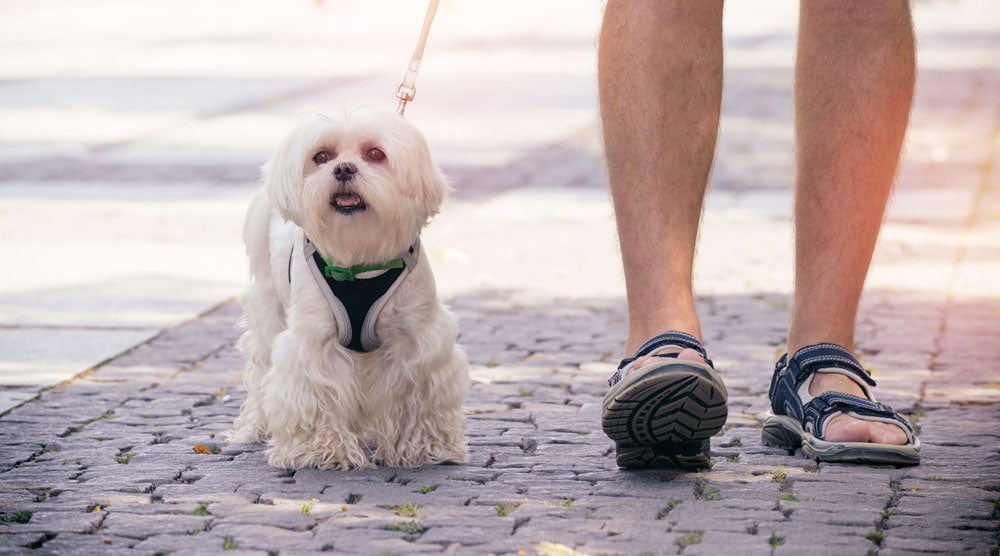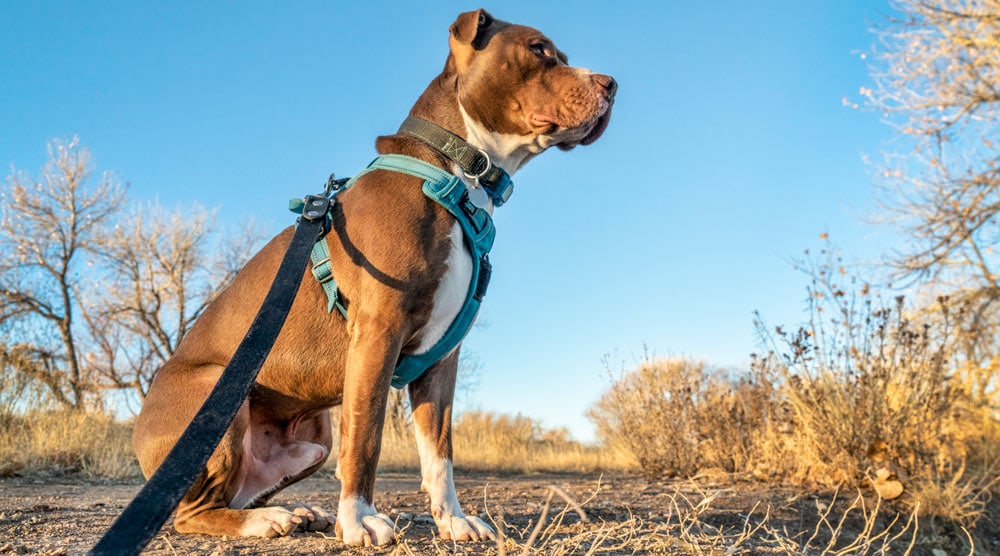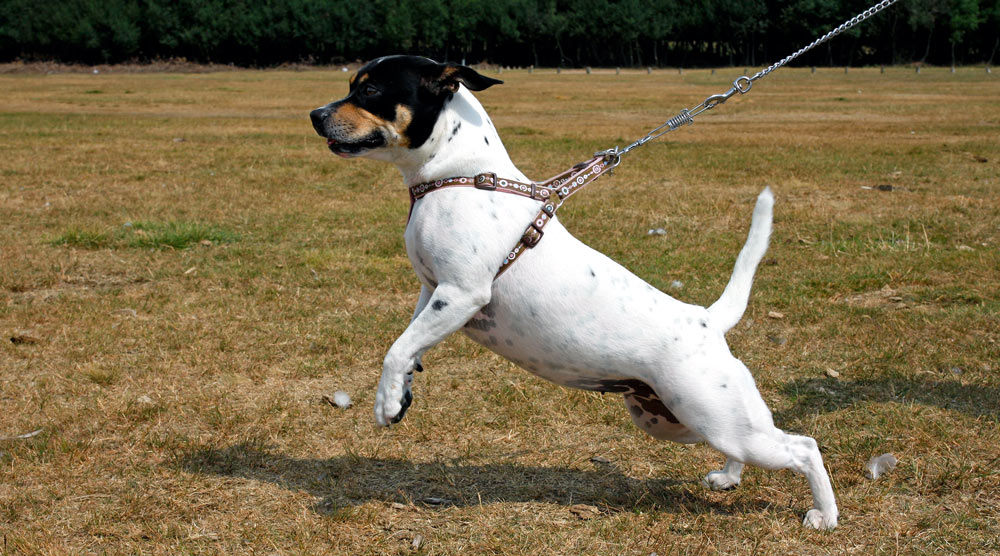Are you looking for the perfect dog harness for your canine friend? If so, choosing the right size is essential for your pet’s comfort and safety.
A properly fitted harness can make walks safer and more enjoyable for your pet. Unlike collars, harnesses are unlikely to slip off. They also reduce pressure on the windpipe – especially if your dog pulls – and can provide more control.
Unfortunately, many harnesses are not properly fitted. This can cause chafing, pain and restricted movement. If the harness is too large, it may slip off.
Part of the problem is that harness sizes are often listed relative to a dog’s weight. This is a quick way to estimate the fit, but I don’t recommend relying on weight alone. After all, is a 50lbs Dalmation going to fit the same harness as a 50lbs Bull Terrier? Probably not!
For this reason, it’s vital to measure your dog and buy a harness that’s correctly fitted. This is easier than it sounds – all you’ll need is a soft tape measure and bathroom scales.
Contents
Step 1: Measure Your Dog’s Chest Size
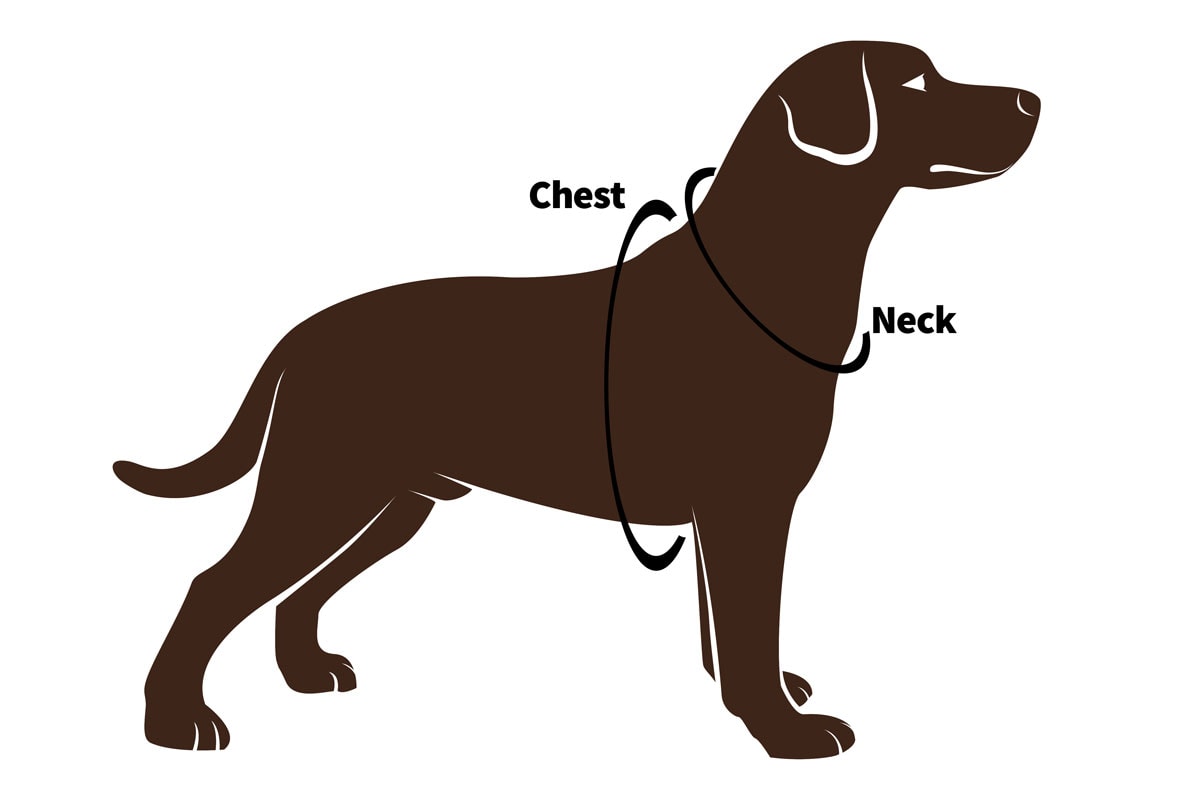
The first measurement you need is chest size. Step-in harnesses (which are the most common design) attach around the top of the chest, so correct sizing is essential.
A dog’s chest should be measured at the widest point by starting at the bottom of the rib cage (see image above). Be careful not to wrap the tape too tightly, as this could affect the measurement.
Tip: Use a cloth or flexible tape measure for this. If your dog won’t stay still, have someone hold him while you take the measurement (and reward with a treat!)
Step 2: Measure Your Dog’s Neck
The next step is to measure your dog’s neck. Take your time with this measurement, as if the harness is too small around the neck it can be uncomfortable or even dangerous. Too large, and it may slip off.
Make sure you take the measurement at the thickest part of the neck, which is just above the shoulders. A common mistake is to measure where the collar usually sits, but this underestimates the size required.
Step 3: Weigh Your Dog
I mentioned you shouldn’t rely on weight alone when sizing, but it’s still a useful measurement to compare with manufacturer guidelines.
The easiest method is to weigh yourself first and then weigh both of you together. Subtract the first number from the second to estimate your dog’s weight. If your pet is too heavy to pick up, you may need to use a vet’s pet scales.
Step 4: Choose the Right Harness
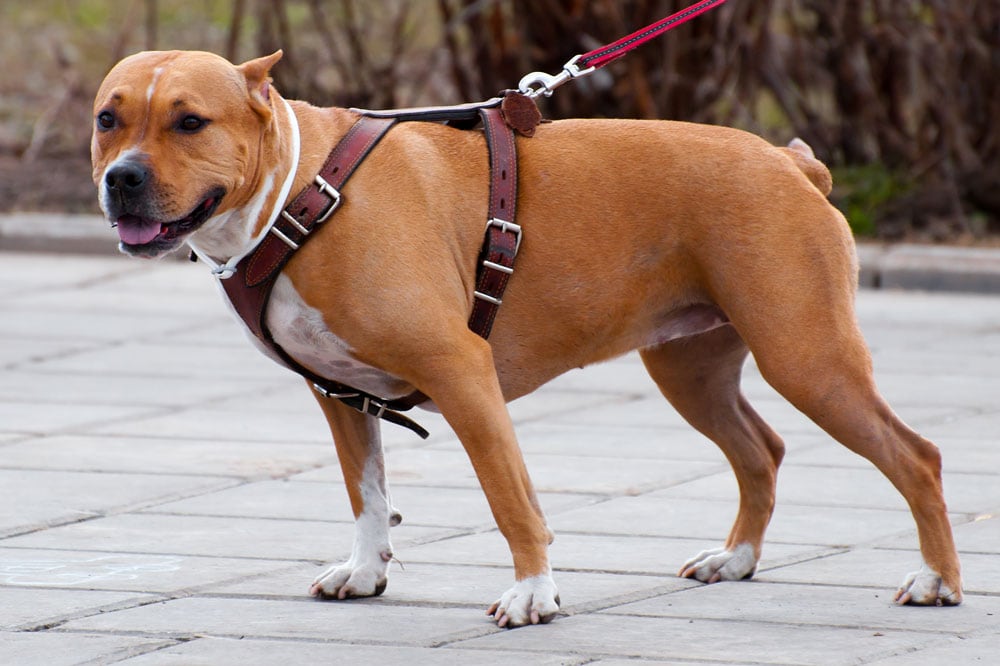
You now have measurements for chest size, neck size and weight. These make it much easier to find the right size harness – but you shouldn’t just get any harness that fits.
There are a number of considerations when choosing a harness. Durability is vital, as a harness needs to withstand daily walks. I also recommend harnesses with multiple adjustment points, particularly around the neck and chest, as these make it easier to get a snug fit.
Once you’ve found a harness that meets your requirements, compare your dog’s measurements with the manufacturer’s sizing chart. This is often found on the back of the box or in the online product description.
Some manufacturers provide a chart with neck, chest and weight sizing guidelines, and these often provide the best fit. Other brands may only provide chest girth and weight guidelines. If the chart only has size recommendations based on weight, it’s probably best to find a different harness.
Tip: Harness sizes often overlap, so you may find your pet falls into two categories. I recommend getting the larger size in this situation.
Step 5: Check for Signs of a Poor Fit
You’ll need to adjust a harness to ensure it fits your pet. Start with a loose fit so it slides over your pet’s head, then adjust the buckles around the chest and neck.
As a general rule, you should aim for a snug fit that still allows two fingers to be placed between your dog and the harness. This ensures the harness is tight enough to prevent your dog getting free, but without being too tight and chafing.
You should then carefully check the harness for signs of it either being too tight or loose. Some of the most common warning signs include:
- Your dog refuses to walk in the harness.
- Your dog’s gait is altered or restricted when wearing the harness.
- There is loose fur around the harness straps.
- The straps chafe against the skin (particularly in the “underarm” area).
- Your dog can wiggle free of the harness.
- The rear section of the harness can rotate too much.
If you notice any of these issues, try adjusting the straps for a better fit. If the harness still appears to be too big or small, you may need to replace it with a different size.
Summary
Dog harnesses can be a great alternative to walking your pet on a collar. They are safer, more comfortable and your dog is less likely to wriggle free.
It’s vital to choose a harness that’s the right size for your pet though. By using a combination of chest size, neck size and weight, it’s much easier to find a harness that provides a snug fit without chafing.
Do you have any questions about choosing a dog harness for your pet? If so, please let me know in the comments section. And if you’re ready to buy a new harness, check out my top recommendations here.
